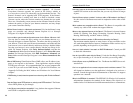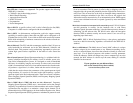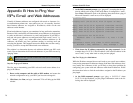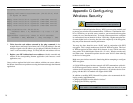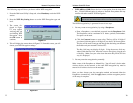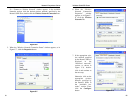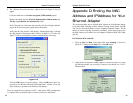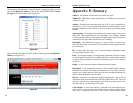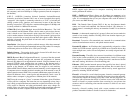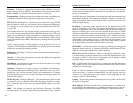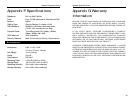
Wireless Cable/DSL Router
RIP (Routing Information Protocol) - A simple routing protocol that is part of
the TCP/IP protocol suite. It determines a route based on the smallest hop count
between source and destination. RIP is a distance vector protocol that routine-
ly broadcasts routing information to its neighboring routers.
RJ-45 - A connector similar to a telephone connector that holds up to eight
wires, used for connecting Ethernet devices.
Router - Protocol-dependent device that connects subnetworks together.
Routers are useful in breaking down a very large network into smaller subnet-
works; they introduce longer delays and typically have much lower throughput
rates than bridges.
Server - Any computer whose function in a network is to provide user access
to files, printing, communications, and other services.
SMTP (Simple Mail Transfer Protocol) - The standard e-mail protocol on the
Internet. It is a TCP/IP protocol that defines the message format and the mes-
sage transfer agent (MTA), which stores and forwards the mail.
SNMP (Simple Network Management Protocol) - A widely used network
monitoring and control protocol. Data is passed from SNMP agents, which are
hardware and/or software processes reporting activity in each network device
(switch, router, bridge, etc.) to the workstation console used to oversee the net-
work. The agents return information contained in a MIB (Management
Information Base), which is a data structure that defines what is obtainable
from the device and what can be controlled (turned off, on, etc.).
Software - Instructions for the computer. A series of instructions that performs
a particular task is called a “program.” The two major categories of software are
“system software” and “application software.” System software is made up of
control programs such as the operating system and database management sys-
tem (DBMS). Application software is any program that processes data for the
user.
A common misconception is that software is data. It is not. Software tells the
hardware how to process the data.
Static IP Address - A permanent IP address that is assigned to a node in a
TCP/IP network.
Static Routing - Forwarding data in a network via a fixed path. Static routing
cannot adjust to changing line conditions as can dynamic routing.
94
Network Everywhere
®
Series
93
Mbps (MegaBits Per Second) - One million bits per second; unit of measure-
ment for data transmission.
mIRC - mIRC runs under Windows and provides a graphical interface for log-
ging onto IRC servers and listing, joining, and leaving channels.
NAT - NAT (Network Address Translation) is the translation of an Internet
Protocol address (IP address) used within one network to a different IP address
known within another network. One network is designated the inside network
and the other is the outside.
Network - A system that transmits any combination of voice, video, and/or
data between users.
Packet Filtering - Discarding unwanted network traffic based on its originat-
ing address or range of addresses or its type (e-mail, file transfer, etc.).
Ping (Packet INternet Groper) - An Internet utility used to determine whether
a particular IP address is online. It is used to test and debug a network by send-
ing out a packet and waiting for a response.
POP3 (Post Office Protocol 3) - A standard mail server commonly used on the
Internet. It provides a message store that holds incoming e-mail until users log
on and download it. POP3 is a simple system with little selectivity. All pending
messages and attachments are downloaded at the same time. POP3 uses the
SMTP messaging protocol.
Port - A pathway into and out of the computer or a network device such as a
switch or router. For example, the serial and parallel ports on a personal com-
puter are external sockets for plugging in communications lines, modems, and
printers.
PPPoE (Point to Point Protocol over Ethernet) - PPPoE is a method for the
encapsulation of PPP packets over Ethernet frames from the user to the ISP
over the Internet. One reason PPPoE is preferred by ISPs is because it provides
authentication (username and password) in addition to data transport. A PPPoE
session can be initiated by either a client application residing on a PC, or by
client firmware residing on a modem or router.
PPTP (Point-to-Point Tunneling Protocol) - A protocol which allows the Point
to Point Protocol (PPP) to be tunneled through an IP network. PPTP does not
specify any changes to the PPP protocol but rather describes a “tunneling serv-
ice” for carrying PPP (a tunneling service is any network service enabled by
tunneling protocols such as PPTP, L2F, L2TP, and IPSEC tunnel



